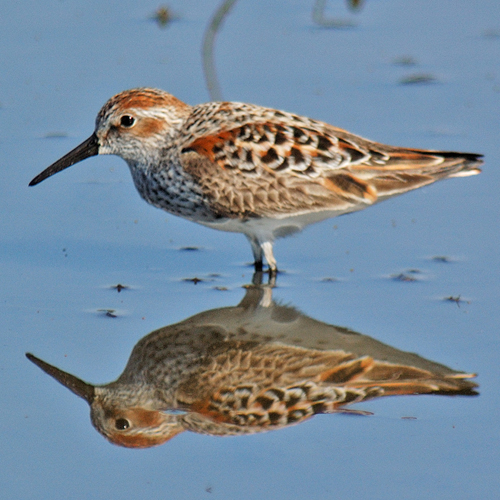General Description
The most abundant shorebird in Washington, the Western Sandpiper is a member of the group known as peeps or stints. In breeding plumage, it has a deep rufous crown and cheek patch, and rufous on the wings. It is heavily streaked and spotted on the breast and back. By fall, much of this color has faded or worn off. Its slightly drooping bill, black legs, and bright rufous patches in breeding plumage help distinguish it from the other Washington peeps, the Least and Semipalmated Sandpipers. The adult in non-breeding plumage is drab gray with a white breast. Juveniles look similar to adults in breeding plumage, but their breasts are not streaked. They have rufous on their backs, but not on their heads or cheeks. Their plumage is not sexually dimorphic, but females have slightly longer bills than males. In flight, they show a white stripe down their wings and white on either side of their tails.
Western Sandpiper's are Common in Western Washington from July-October and April May.Habitat
Most of the population of Western Sandpipers breeds in Alaska, in dry tundra areas with low shrub cover and nearby marshes. During migration, they are mostly coastal, but some migrate across land and stop over at inland wetlands. During coastal migration and in winter, they occur in most shoreline habitats, but prefer mudflats and sandy beaches.
Behavior
Western Sandpipers form huge flocks in the spring. Typically found walking with their heads in the water, Western Sandpipers mostly probe for food, but will also pick food from the surface. Because of their long bills, they can feed in deeper water than other peeps.
 |
| Non Breeder |
 |
| Breeder |
No comments:
Post a Comment